Better Homes And Gardens Faux Fur Throw Ivory Leopard
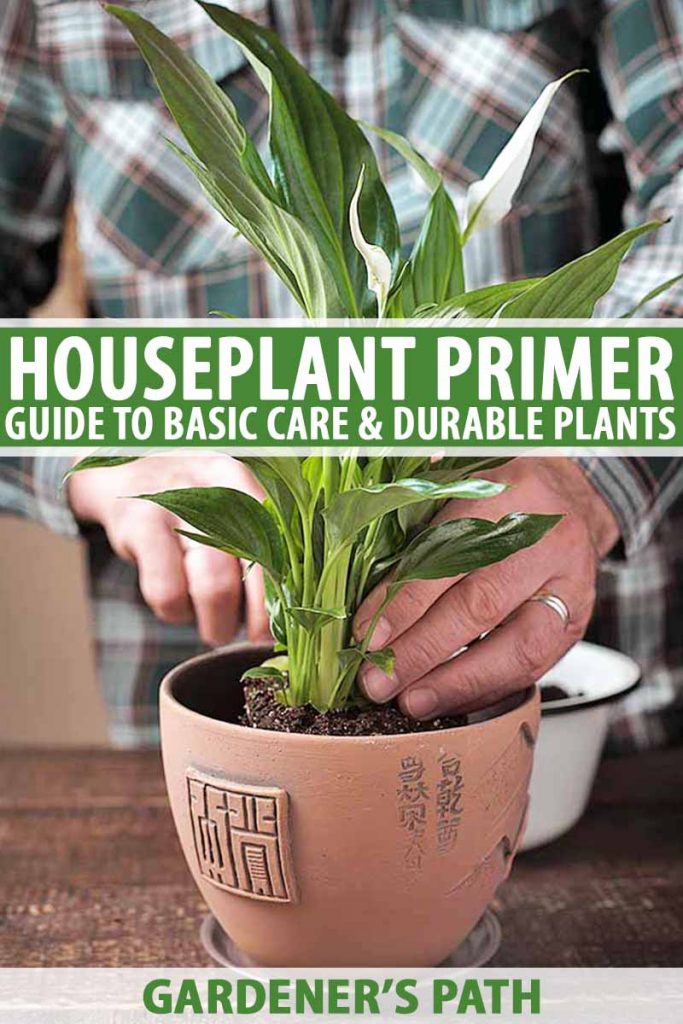
There's something about bringing the green from the outdoors to the indoors that brightens up our homes and workplaces.
As I write these very words, I am taking a look around to count the houseplants I have on my writing desk and all around the room. Right now, I am fortunate to have a sunroom in my apartment, a safe place for houseplants to perk up and do their thing.
But I wasn't always so lucky. My last apartment had exactly four (that's right, four) windows, and they all faced directly east. It struck me as an inhospitable environment for houseplants, a dark and cool dungeon that offered them little invitation and support.
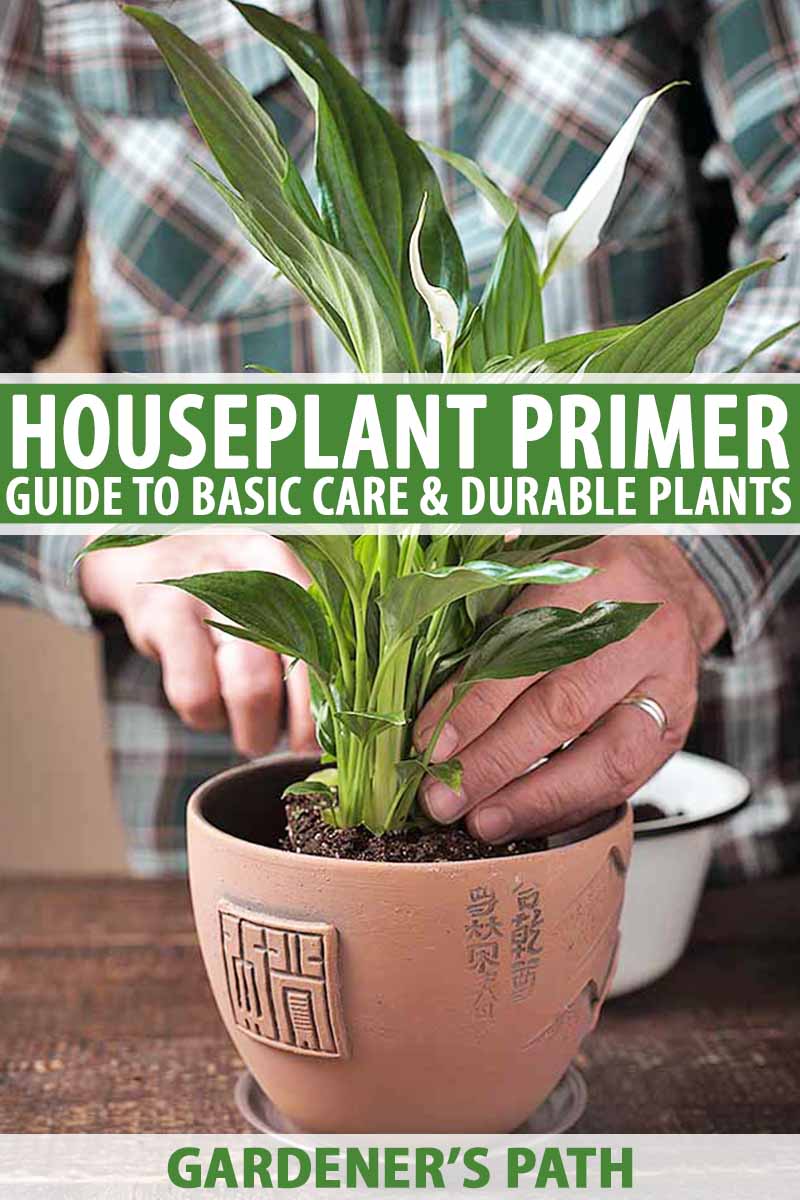
We link to vendors to help you find relevant products. If you buy from one of our links, we may earn a commission .
It took some hunting and some research, but I found an impressive roster of plants that could thrive in my dimly lit apartment.
Most importantly, I learned about the bare minimum that houseplants need to survive indoors. And I adopted some basic practices to keep these guys safe and happy.

I'm here to tell you about a great selection of houseplants that anybody can grow, and we'll go over the basics on care and maintenance. When you've got a better understanding of these practices, you'll practically see your thumb turning green before your very eyes.
Caring for Your Plants
We'll get into the details later to explain why this works, but first, repeat after me:
"Everything in moderation."
Ah, that felt good. It is a truism that applies to all aspects of our life (except cake, you always need more cake!), and it most certainly applies to plant care. All plants require water, light, and food, but the trick to success is to practice moderation.
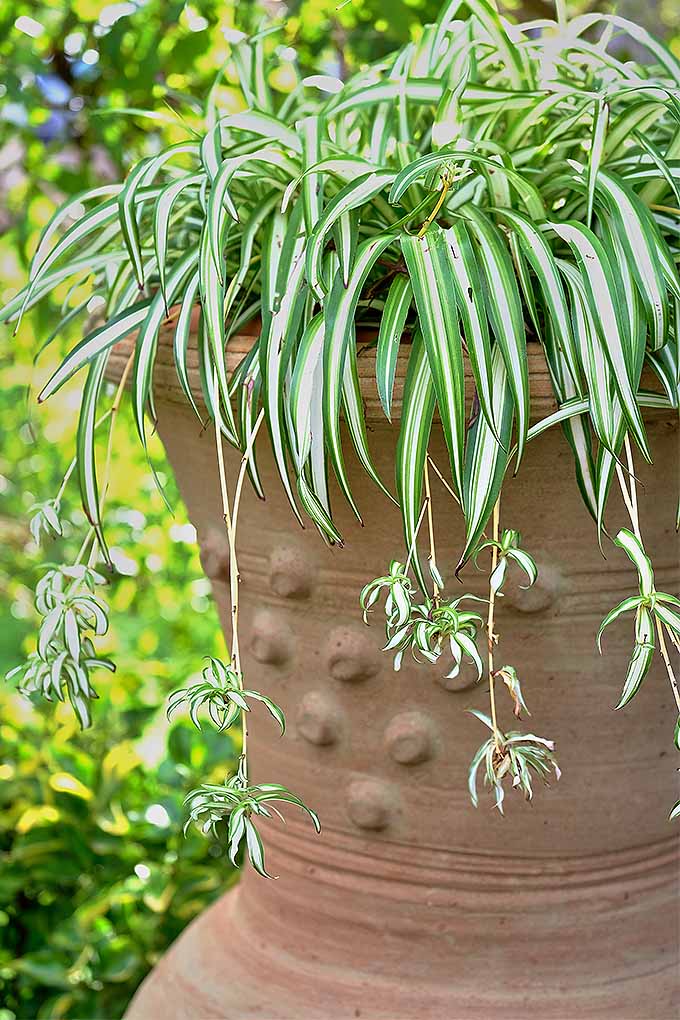
Additionally, let's think about the native climate for the majority of our houseplants. It is typically a tropical area. Our goal is to imitate that environment as closely as possible without going overboard. Just like The Price Is Right, the rules are the same here.
Start with the Soil
"Soil" is a bit of a misnomer when it comes to the growing media used for indoor plants. The best growing media is soil-less and is a combination of equal parts peat moss, vermiculite/perlite, and compost.
On Watering
Most of the time, people are concerned they aren't watering enough, when in fact they are watering far too much! Plants don't want to have "wet feet," a friendly term for when their roots are absolutely saturated from sitting in a puddle for days.
The most accurate assessment of a plant's need for water is accomplished by testing its weight. Pick up the container of the plant and see how much it weighs; the lighter it is, the more it needs a drink. Unless noted otherwise, most houseplants would prefer being slightly dry than soaking wet.
That means a watering schedule of once or twice a week is suitable for most plants, where you water the plant thoroughly but infrequently. When I water my houseplants, I will pour water onto the soil at a slow, deliberate pace, until the water starts escaping from the drainage holes of the container. That's your signal to stop watering!
During winter months, a plant typically only needs watering a few times a month.
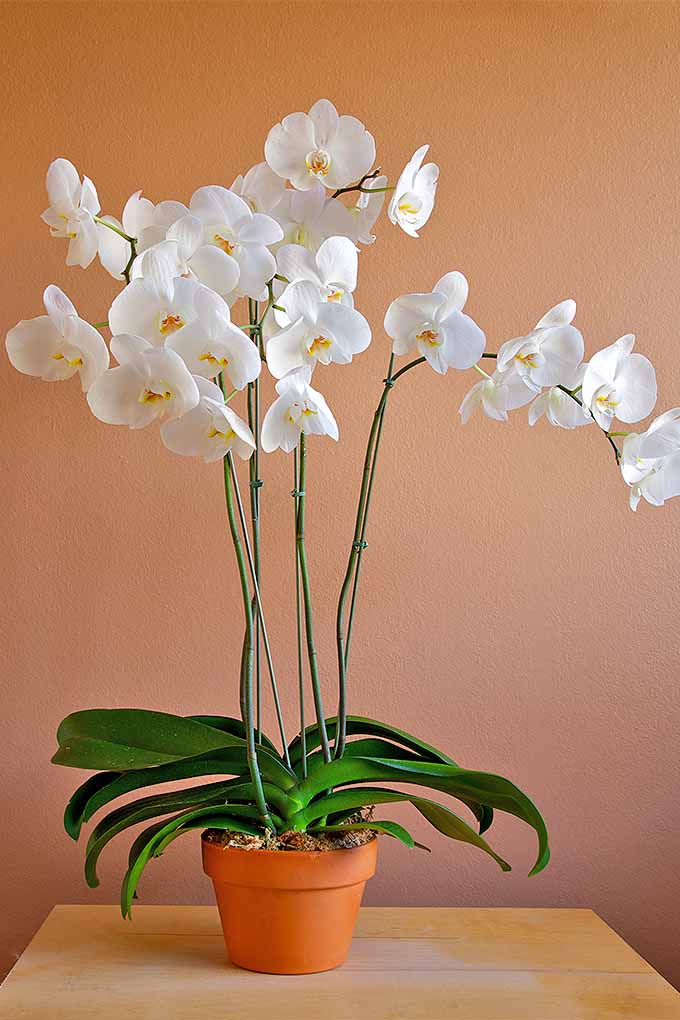
Placing a tray underneath the potted plant's container is the best way to catch that excess water and prevent a mess. These can be bought for a few dollars, if you want a plain and unadorned plastic tray. Alternatively, you can purchase more decorative trays for more money.
Purchasing a simple spray bottle is also helpful for houseplants. A light misting once or twice a day is usually beneficial. Remember that we're trying to duplicate the natural environment for these plants, and that means humidity and misting!
Some plants want more water, and some want less… but that's what this guide is for!
Brighten Up!
Light is just as important as water. All plants need light to carry out their necessary biological processes. I'm looking at you, photosynthesis!
Although all plants need some light to grow, some plants require a lot less than others. Think again of their native habitat and imagine the dark undergrowth where these plants thrive. They receive heavily filtered light but still keep on kicking.
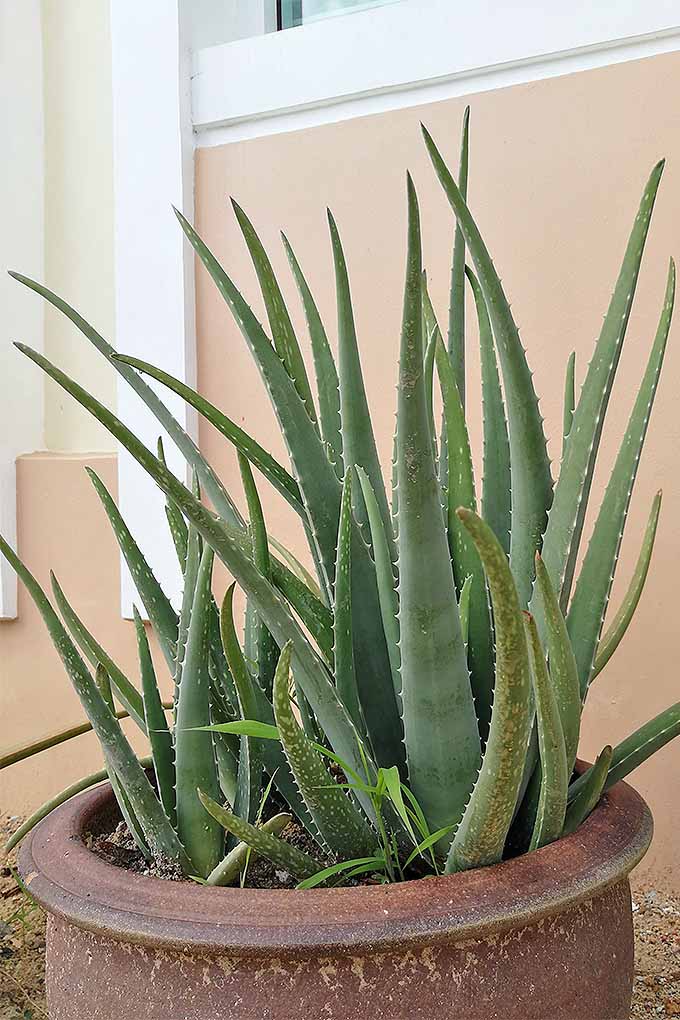
Houseplants typically require high light (six or more hours a day), medium light (four to six hours a day), or low light (less than three hours a day). Plants will either require bright or direct light (sunlight from a south-facing window) or indirect or filtered light (sunlight through a curtain or light from a bulb).
If plants don't get the light they need, they won't necessarily die, but they will stop producing new growth.
Fertilizing Time
Although plants carry out photosynthesis to process the sugars they need to survive, they also need a more direct form of food to carry out growing processes. Providing fertilizers to your houseplants helps ensure they will remain happy and healthy.
The food can be delivered via a granule that breaks down over time, or it can be added more directly via a water soluble fertilizer. Granules generally need to be applied once every few months, while water soluble fertilizers should be applied every two weeks or so. Read the directions on a specific fertilizer to see what is recommended.
The Right Temperature, Good Air Flow, and the Best Face
Aim to keep the plant in a warm environment with some air circulation, and rotate its face!
Almost all houseplants need a minimum temperature of 55ºF to survive. Keep plants away from areas of cold drafts in the winter. The warmer it gets for houseplants, the happier they are!
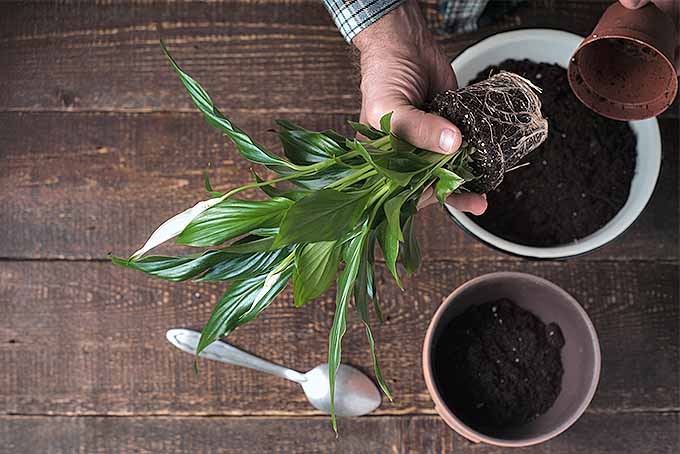
Airflow is crucial to maintaining a healthy house plant. This can easily be achieved by running ceiling fans in your home to keep the air circulating. Still air, on the other hand, can cause a host of ailments in your houseplant. That's why all greenhouses have those giant fans running.
Use a cloth to wipe down the leaves of houseplants occasionally, to prevent the white buildup and coating of dust that can impact their health.
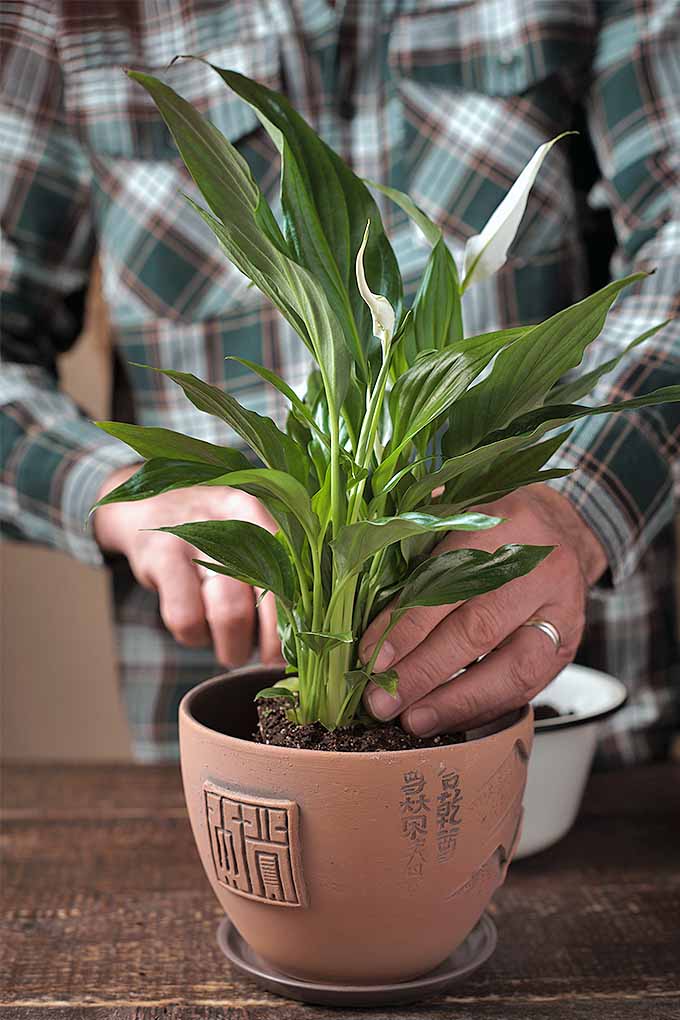
If your plant is in a sunny location, it's important to give it a small rotation regularly to ensure even growth. If you imagine the "face" of your plant is facing the main light source, turn the plant one-quarter turn each week to help guarantee even growth.
Now that we have a general familiarity with what houseplants need and how they need it, let's get to business and start picking out our plants!
The Plant Roster
1. Snake Plant (Sansevieria trifasciata)

General Knowledge
A gorgeous plant that is happy as a clam in just about any corner of the house.
Commonly known as mother-in-law's tongue, the snake plant has a striking form and a variety of colors to choose from. It produces "pups," baby snake plants that can be separated from the mother plant and potted up to fill the rest of your house. When conditions are optimal, the snake plant will push up a delicate stalk with white flowers on it.
Snake plants can remove toxins from the air, a feature shared by several other plants in this guide.
Light
Although they can survive in fluorescent lighting conditions, snake plants appreciate more direct light
Water
Snake plants can handle drying out between watering. Once or twice a week is enough, and once or twice a month during the winter months is suitable for this tough plant.
Fertilizer
Fertilize once in the spring with a 20-20-20 fertilizer, like the Jack's All-Purpose Fertilizer listed above.
Find our complete growing guide here.
2. Dumb Cane (Dieffenbachia)
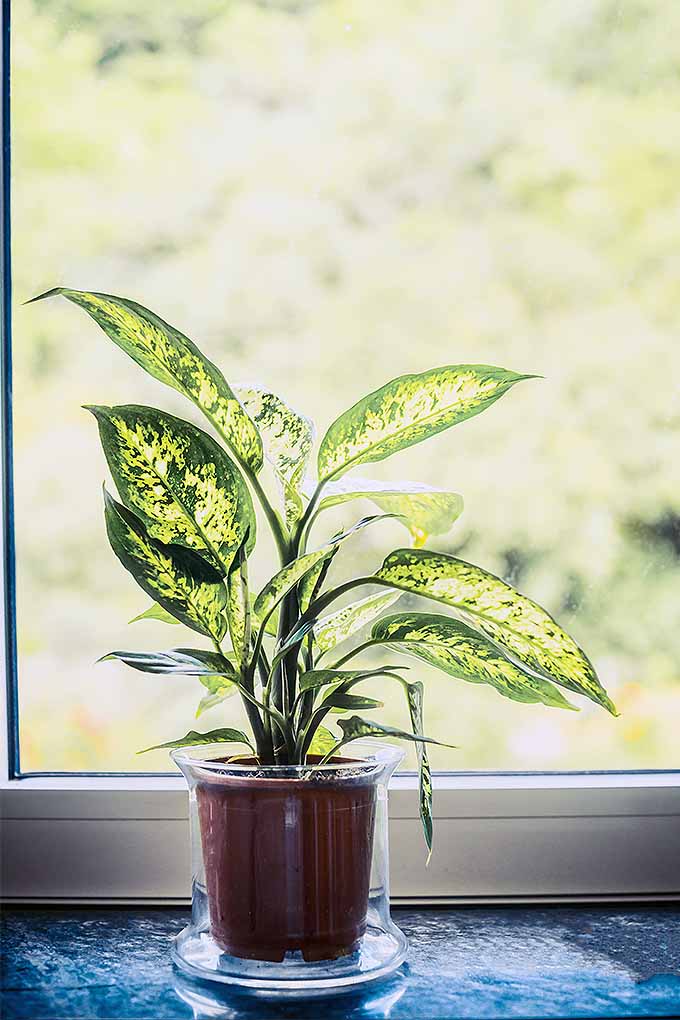
General Knowledge
A personal favorite, dumb cane features a large and in charge leaf. There are several varieties available, but this speckled green-and-white one is the most ubiquitous.
Dumb cane forms a very attractive, upright shape that fills in an otherwise empty area. Its common name "dumb cane" is attributed to the throat-numbing effect it has when ingested, making it impossible for a person to speak. A word to the wise: don't eat it!
This plant is readily available at most garden centers.
Light
The large leaves of the dumb cane are sensitive to too much direct sunlight, so filtered light is ideal for these plants. Some specific cultivars might require low light, so check the tag that comes with yours.
Water
Aim to keep the soil moist, but not wet, watering once or twice a week depending on the heat. If the soil is not dry an inch below the surface, it does not need to be watered.
Fertilizer
Use a water soluble fertilizer twice a month, or apply a granule as directed.
Find more information on growing dumb cane here.
3. Peace Lily (Spathyphillum)
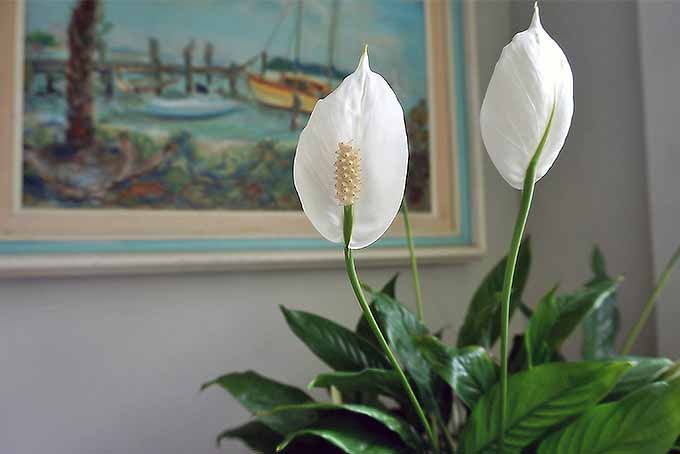
General Knowledge
The peace lily is a dark-leafed plant that produces an iconic white "flower." It is actually a specialized leaf bract, or a modified leaf.
Its broad leaves form an attractive and lush foliage that's far from boring, and the beautiful white flowers act like a bold exclamation mark demanding attention.
The peace lily is an air-purifying powerhouse of a plant and removes an array of toxins from the air. It adapts to many growing situations gracefully.
Light
Tolerant of low light but at its best in a medium light setting.
If a peace lily receives adequate light it will produce the beautiful tall white flowers it is known for. If the peace lily is in a more heavily shaded environment, it will not produce these flowers but still maintains healthy and attractive foliage.
Water
Peace lilies prefer to be more dry than wet. If the soil is not dry to the touch, do not water the lilies!
Another sure method is to watch for the leaves to start going limp. This is an indication of a lack of water, but because the peace lily prefers dry over wet, it's safe to wait for this visual cue.
Fertilizer
Apply twice a year, using a granule fertilizer.
Read more about growing and caring for peace lilies here.
4. Pothos (Epipremnum)
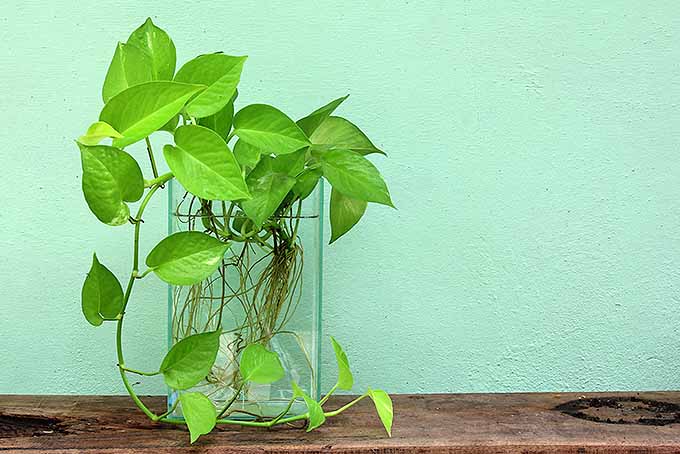
General Knowledge
Practically indestructible, the pothos plant is without doubt the most common plant in my home. My fiance delights in propagating new plants from single cuttings taken from a host plant.
Developing a trailing habit, pothos will grow in soil or directly in water, so it opens up a new option for decorating that steps away from the standard container.
Light
Will grow in almost any lighting condition. Pothos is at its best in a medium light environment, but will survive under fluorescent lighting alone.
Water
Very infrequently. Allow the pothos to dry out between waterings, and alternate between light drinks and deep ones.
Pothos is susceptible to root rot, so the less watering the better – just don't let the leaves dry out and shrivel!
Fertilizer
Use a water soluble fertilizer once a month.
Learn more about growing pothos plants here.
5. Spider Plant (Chlorophytum comosum)
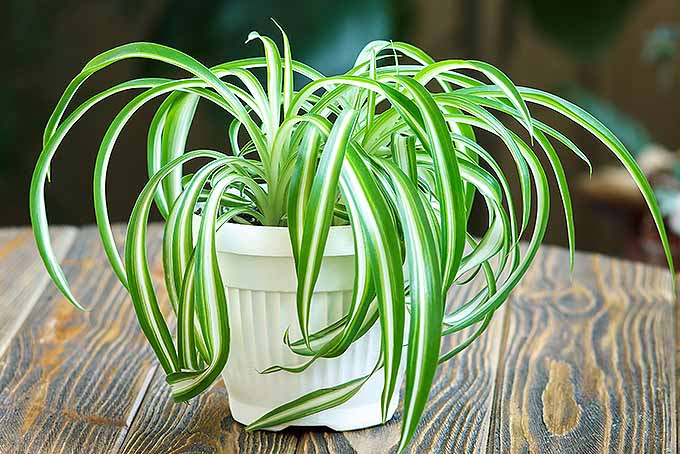
General Knowledge
A very popular choice, the spider plant produces dozens of little "babies," tiny clones of itself that can be repotted to form a veritable army of white-and-green plants.
An ideal choice for bathrooms and kitchens, the spider plant thrives in bright light and soaks up atmospheric moisture quite contentedly.
Light
Bright light is ideal for a spider plant. These do not prosper in a shady environment.
Water
A few steamy showers a week is enough for most spider plants to thrive on, but if your plant is in a different room you'll only need to water once a week or so. Water when the soil is dry.
Fertilizer
Apply four times a year, using a water soluble fertilizer, but avoid fertilizing in the winter.
Read more about growing spider plants here.
6. Ponytail Palm (Beaucarnea recurvata)
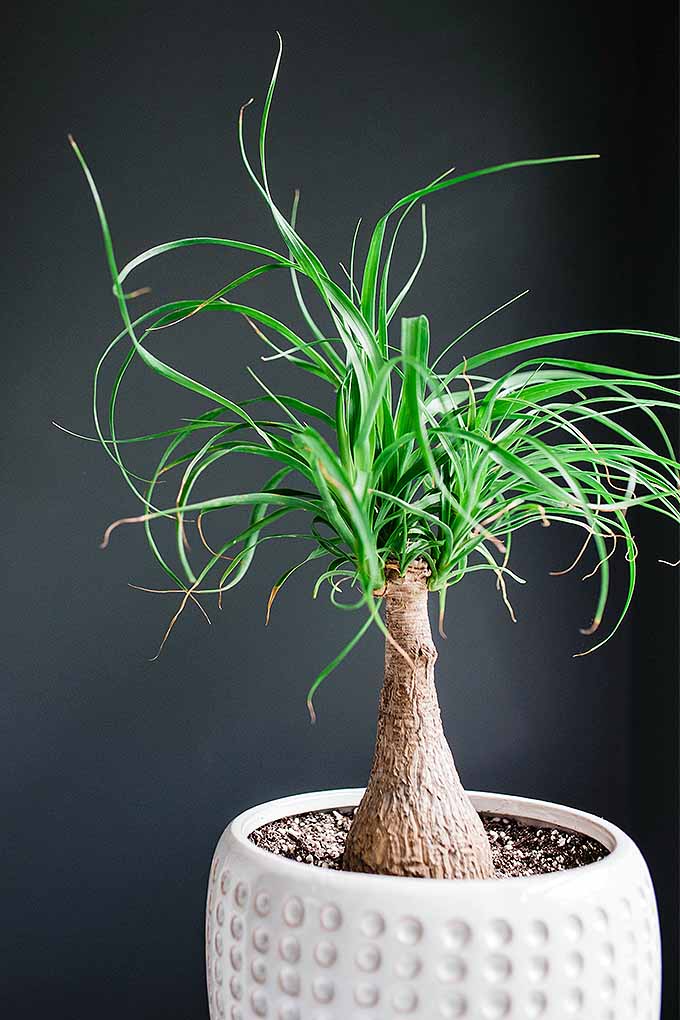
General Knowledge
One of the funkiest looking plants out there, don't bother with a ponytail palm if you aren't a fan of a wild hairstyle.
The trunk of the ponytail palm resembles an elephant's foot, and the long and spindly green leaves that erupt from the surface look like a freeze-framed fountain.
Although I love the wild look of the ponytail palm, my interest lies primarily in the fact that these things thrive on neglect. Seriously, the one above my computer desk hasn't been watered in over a month and it seems perfectly content.
Light
Ponytail palms love the light, and they'll take a lot of bright light. They do not like too much shade, but will maintain their present form in these conditions without producing new growth.
Water
Infrequently at most. The ponytail palm stores water in its trunk like a cactus (they are actually a variety of succulent), and only requires water once every three or four weeks.
Fertilizer
Use a fraction of the recommended amount of an all-purpose fertilizer for a ponytail palm, maybe 1/10th of the suggested ratio.
Read more about growing ponytail palms here.
7. Rubber Plant (Ficus elastica)

General Knowledge
One of my favorite plants, the rubber plant offers a bold burgundy color to its foliage that stands apart from the other plants in this guide. It is a plant that is very tolerant of abuse, great for the more hands-off of indoor gardeners among us.
New growth on these guys can be a sharp red color as the new leaf begins the growing process. If you're looking for a bold and unique-looking houseplant, the rubber plant is the one for you.
Light
Lots of light, but indirect. Put the rubber plant near a sheer curtained window for optimum light exposure.
The dark burgundy leaves are a result of lots of light exposure. With too little light, the plant will develop green foliage instead.
Water
Keep the soil moist during the spring and summer, but begin to taper off during the winter months. The leaves of the rubber plant enjoy a good misting.
Fertilizer
Once a month during the spring and summer with a water soluble fertilizer is ideal.
8. Aloe (Aloe vera)
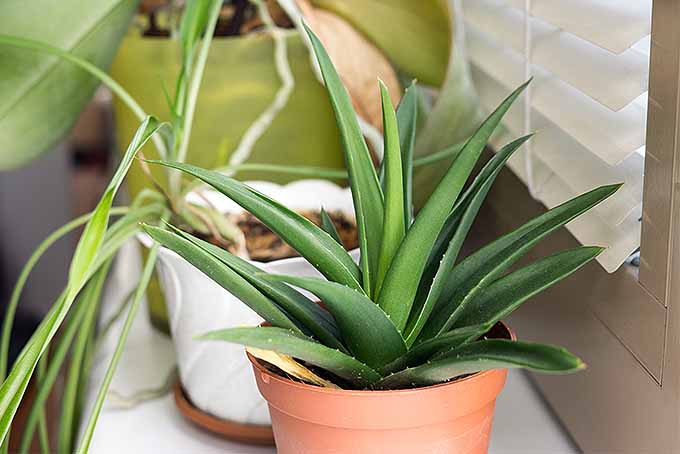
General Knowledge
I have many fond memories of aloe plants. When I was a child, if I scraped my knee or developed a sunburn, I knew my cure was only an aloe leaf away.
Besides being medicinal marvels, aloe is also a very easy plant to take care of. If you've got a sunny and warm area, aloe will thrive and produce its iconic sharp-thorned green arms.
Light
Direct sunlight, and lots of it!
Water
Sparingly but thoroughly. Aloe needs to drain completely between watering, otherwise root rot can set in.
Allow the soil to dry completely between waterings, and don't be afraid to wait a few days even after that.
Fertilizer
Use a general-purpose fertilizer diluted to about 50% of its recommended strength, once a month from March to August.
Read more about growing aloe vera plants here.
9. Moth Orchid (Phalaenopsis)
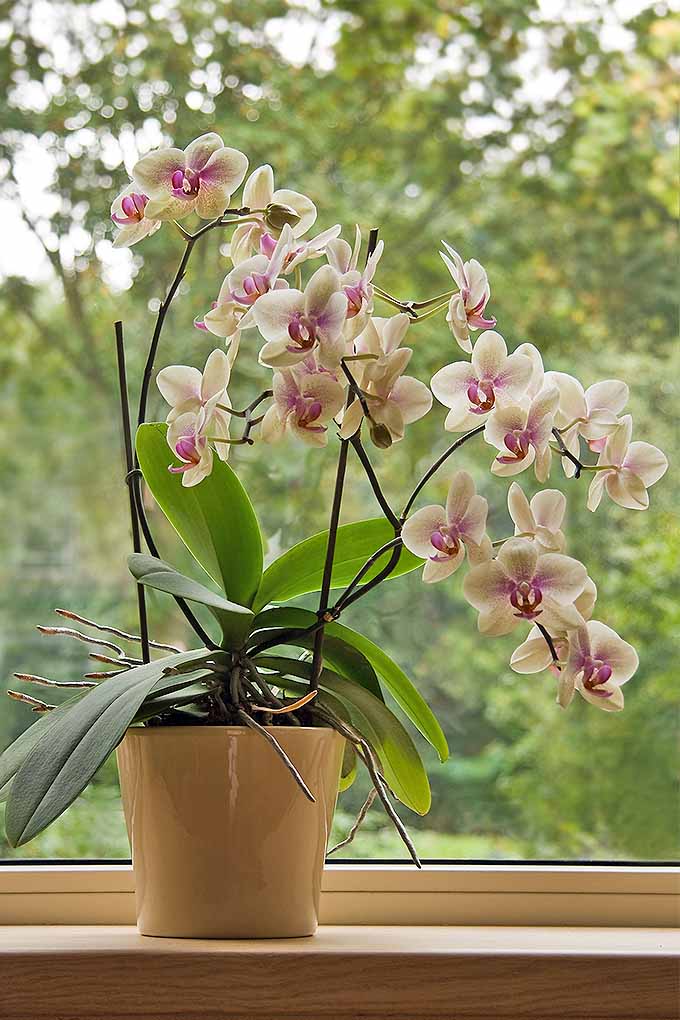
General Knowledge
Yes, even orchids are on this list!
The moth orchid is the most common orchid you'll find in big box stores and garden centers. It's a relatively easy plant to take care of, and is forgiving of a few hiccups in your quest to prompt it to rebloom.
If you're a patient person and can wait a year or more for an orchid to rebloom, then pick one of these guys up and give it a shot.
Light
This type of orchid prefers a little less light, of the indirect variety. I keep mine in the back room where it gets light from skylights and that's all.
Once you find the best space in your home for these orchids, they'll be happy to flower and keep on growing.
Water
Minimal watering, once a week at the most.
In the wild, orchids will absorb water atmospherically through their roots. When potted, we only need to give them a quick drink once a week or so.
Their roots should be spongy and light-green in color.
Fertilizer
Once a month during the spring and summer, and none during the winter. Use a water-soluble fertilizer.
Time to Fill Your House with Greenery
Armed with our guide, it's time to get planting! Using an appropriate potting medium and well-draining pots, you're well on your way to indoor gardening success.
Whether its in a sunny window or the moist confines of your bathroom, you're sure to find a plant that's perfect for your space.

If you're a pet-lover or you have children running around the house, please note that not all of the recommended plants on this list are appropriate, as some are potentially toxic if ingested or may cause a rash. These include snake plant, dumb cane, peace lily, pothos, and the rubber plant. Please check out our list of the best non-toxic houseplants for more suggestions.

We'd love to hear about your successes and favorites in the houseplant category. Leave us a comment!
Product photos via Espoma, Sun Bulb, JR Peters, and Osmocote. Uncredited photos: Shutterstock. With additional writing and editing by Allison Sidhu.

About Matt Suwak
Matt Suwak was reared by the bear and the bobcat and the coyote of rural Pennsylvania. This upbringing keeps him permanently affixed to the outdoors where most of his personal time is invested in gardening, bird watching, and hiking. He presently resides in Philadelphia and works under the sun as a landscaper and gardener, and by moonlight as a writer. An incessant questioning of "Why?" affords him countless opportunities to ponder the (in)significance of the great and the small. He considers folksy adages priceless treasures and is fueled almost entirely by beer and hot sauce.
Better Homes And Gardens Faux Fur Throw Ivory Leopard
Source: https://gardenerspath.com/how-to/indoor-gardening/houseplant-care-primer/
Posted by: gentilelovent.blogspot.com

0 Response to "Better Homes And Gardens Faux Fur Throw Ivory Leopard"
Post a Comment